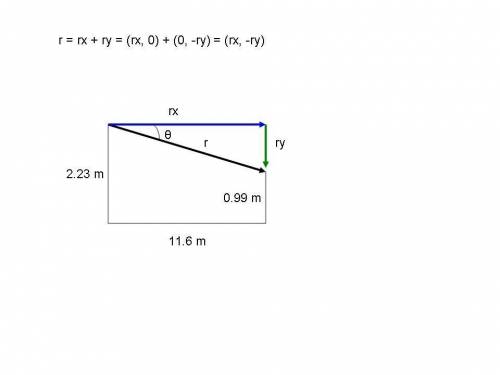
Physics, 14.09.2019 04:10, ayoismeisalex
Serving at a speed of 164 km/h, a tennis player hits the ball at a height of 2.23 m and an angle θ below the horizontal. the service line is 11.6 m from the net, which is 0.99 m high. what is the angle θ in degrees such that the ball just crosses the net? give a positive value for the angle.

Answers: 1
Other questions on the subject: Physics

Physics, 22.06.2019 02:00, honeybaby675610
Askydiver weighing 140 lb (including equipment) falls vertically downward from an altitude of 19,000 ft and opens the parachute after 18 s of free fall. assume that the force of air resistance, which is directed opposite to the velocity, is of magnitude 0.55|v| when the parachute is closed and is of magnitude 14|v| when the parachute is open, where the velocity v is measured in ft/s. assume that acceleration due to gravity has magnitude 32 ft/s/s; remember that weight is the product of mass and gravitational acceleration. (a) find the speed of the skydiver when the parachute opens. (b) find the distance fallen before the parachute opens. (c) what is the limiting velocity vl after the parachute opens? (d) determine how long the sky diver is in the air after the parachute opens. (e) plot the graph of velocity versus time from the beginning of the fall until the skydiver reaches the ground.
Answers: 1

Physics, 22.06.2019 10:00, jonlandis6
Need people build a dam to create a reservoir that supplies water a nearby city needs. describe two ways this action will likely affect the water cycle in the local environment. (5 points) worth 20 points
Answers: 1

Physics, 22.06.2019 15:00, koranbutterton
Astudent throws a water balloon with speed v0 from a height h = 1.76 m at an angle θ = 21° above the horizontal toward a target on the ground. the target is located a horizontal distance d = 9.5 m from the student’s feet. assume that the balloon moves without air resistance. use a cartesian coordinate system with the origin at the balloon's initial position. (a) what is the position vector, rtarge t, that originates from the balloon's original position and terminates at the target? put this in terms of h and d, and represent it as a vector using i and j. (b) in terms of the variables in the problem, determine the time, t, after the launch it takes the balloon to reach the target. your answer should not include h. (c) create an expression for the balloon's vertical position as a function of time, y(t), in terms of t, vo, g, and θ. (d) determine the magnitude of the balloon's initial velocity, v0, in meters per second, by eliminating t from the previous two expressions.
Answers: 3

Physics, 22.06.2019 19:30, barstr9146
How many electrons in an atom could have these sets of quantum numbers? =3n=3 electronselectrons =4,ℓ=2n=4,ℓ=2 electronselectrons =6,ℓ=ℓ=−1n=6,ℓ=2,mℓ=−1
Answers: 3
Do you know the correct answer?
Serving at a speed of 164 km/h, a tennis player hits the ball at a height of 2.23 m and an angle θ b...
Questions in other subjects:


History, 16.07.2019 17:00

English, 16.07.2019 17:00






Social Studies, 16.07.2019 17:00

Social Studies, 16.07.2019 17:00








